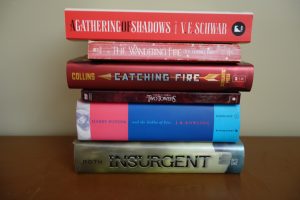Gwynn Scheltema
In May we invited writers to submit to a postcard story contest based on a visual picture of an interesting face in black and white. All just for fun, no monetary prizes. We’d like to thank all those writers who entered from Canada and abroad. We’d love to give you all a prize just for submitting because often that’s the hardest step, but of course we can’t.
Instead, today we announce our longlist. We originally planned on having five on the long list, but ended up with six.
Longlist (in alphabetical order):
Helen Bajorek-MacDonald
Adam Conway
Deb Rankine
Lisa Reynolds
Ann Rocchi
Lori Twining

So now what?
Over the next three weeks we will feature the winning entry and two runners up with comments by the writers on what inspired them and from us on why we chose them.
But today let’s talk about the advantages of being on a longlist, a runner up or an honorable mention.
Potential

If your submission made it on to a longlist, it means your entry was among the cream that rose to the top. Even if it doesn’t ultimately win, the judges acknowledged that it had potential to be a winner.
Feedback
Sometimes you get feedback, and any judge or editor comment is worth the price of admission. You’re not obliged to take their advice, of course, but it answers that eternal question: why didn’t it win? In some cases, it’s good practical advice, and in some cases, it’s subjective, but at least you know where you stand.
Learning
If you don’t get feedback on your submission, take the time to read and analyze the winning entries. How are they different from yours? What did they do to really shine? Tighter story? Great voice? Interesting unique style? Dynamic dialogue? Don’t get emotional or defensive. Instead, focus on learning what steps to take to put you on the road to success.
Confidence

Knowing that you made it into the top group of the entire entry body can be a huge boost to confidence especially for new writers or those who feel like they are in the doldrums. It’s recognition after all. Affirming recognition. When I was a new writer, my creative writing teacher had the class enter the Toronto Short Story contest as an assignment. I’m one of those don’t-share-till-I’m-sure kind of writers and sending in my entry felt like casting a delicate flower onto stormy waters. When I placed in the top 20 in a field of over 4000, I was ecstatic. I ran around the empty house telling every table and cupboard and drapery, then phoned all my writing buddies. Even though I didn’t win, I finally felt like a real writer.
Publishing credits
Some contests publish some or all of their longlist winners, and that counts for your writing resume. Even if it isn’t published, the fact that it made it onto the long list is resume worthy. One year I made it onto the Contemporary Verse 2 (CV2) longlist for their popular 2-day poetry contest (again, didn’t win) but received a year’s subscription to the magazine as a reward. Now my longlist success sits proudly on my writing resume. Agents and publishers look for publishing credits, and longlist placings tell them that your work has been judged as worthy of winning.
When my Writescape partner Ruth entered the Montreal International Poetry Prize in 2011, she was thrilled to be placed on the longlist. It meant her poem Gilt made it into the online longlist anthology, and became a proud item in her literary resume.
Exposure to the Industry
Ruth was equally chuffed when her short story entry received an honourable mention in Geist‘s Literal Literary Postcard Story contest. Then the icing on the contest cake: the prestigious U.S. quarterly, Utne Reader, asked for Ruth’s permission to reprint her story in their online magazine. So not winning top spot can give you inroads to places you didn’t foresee.
In our years as editors for the literary journal Lichen Arts & Letters Preview Ruth and I were often asked to be judges and many times, deciding on final winners from the longlist was a painful process. All too often, a great story didn’t win but was eminently publishable. Knowing this, when we received submissions that could boast a longlist placing on the piece, it made it out of the slush pile pretty quickly.
Networking

With the ease of modern social media, making contact with your fellow longlist peers or others following the contest results can increase your writing network, and suggest possible writers for critique sharing or beta reading.
Motivation
Yes, it’s disappointing to be on a longlist and then not make it to the finish line, but the trick is to focus on the fact that the piece had enough merit to make it that far, and let that success propel you forward. Take a second look, edit it or polish it and send it out again. If it’s that close, it will find a home.
So hearty congratulations to our longlist writers! Stay tuned for next week’s announcement and publication of our third place entry.












































